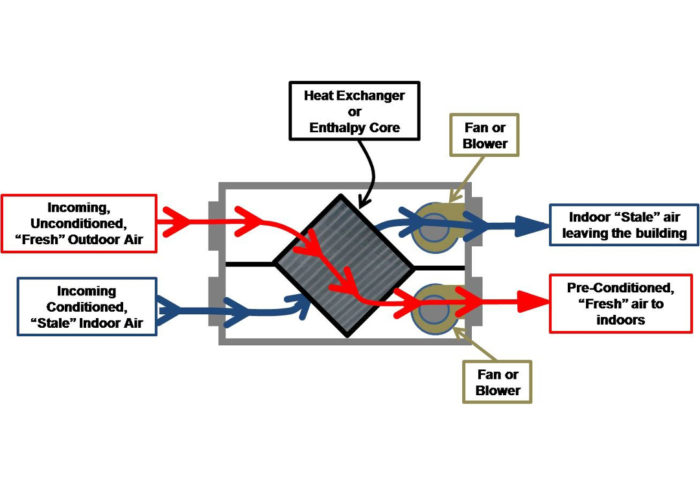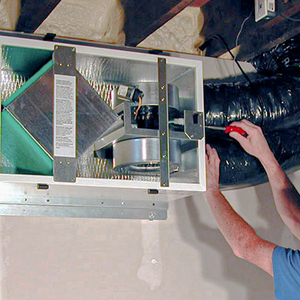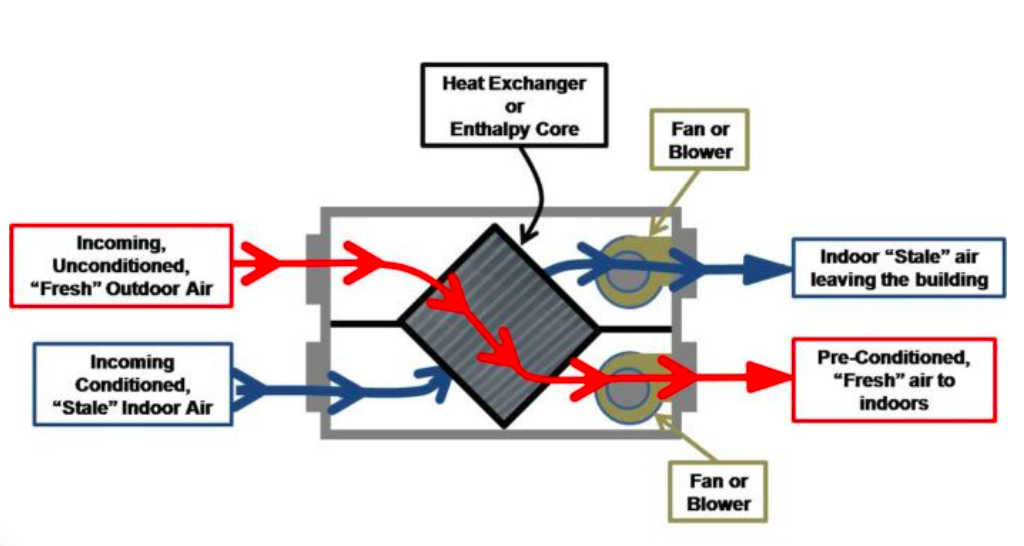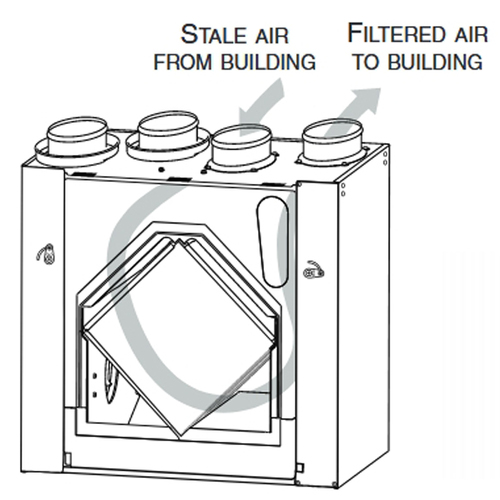
Image Credit: PNNL
Since refrigerators have been around for almost a hundred years, most Americans know what a refrigerator is used for. But heat-recovery ventilators (HRVs) and energy-recovery ventilators (ERVs) have only been around for about 30 years, and many Americans still don’t know much about these appliances.
GBA regularly receives questions that show that some homeowners are confused about the purpose of these appliances, so it’s worth examining and debunking common misconceptions about HRVs and ERVs.
Not a space heating appliance
Journalists who try to describe HVAC equipment in a Passivhaus building are sometimes confused about the distinction between ventilating equipment and space-heating equipment. That’s why they write sentences like these: “This home doesn’t have a furnace or a boiler. A heat-recovery ventilator supplies all of the heat needed to keep the house warm.”
In fact, HRVs and ERVs are ventilating appliances designed to introduce fresh air into a house and to exhaust stale air from the house. (While an HRV has a core that transfers heat from one air stream to the other, an ERV has a core that transfers both heat and moisture. For more information on HRVs and ERVs, see the GBA article titled HRV or ERV?)
These ventilating appliances aren’t designed to provide heat. On the contrary: during the winter, operating an HRV or ERV will tend to lower, not raise, the indoor air temperature. While it’s true that these appliances have a heat-exchange core, the efficiency of these heat exchangers is necessarily less than 100% — so operating an HRV or ERV during the winter inevitably sends some of the home’s heat outdoors.
The confusion arises because some Passivhaus builders install a heater — for example, an electric resistance heating coil or the condensing coil from an air-source heat pump — in the…
Weekly Newsletter
Get building science and energy efficiency advice, plus special offers, in your inbox.

This article is only available to GBA Prime Members
Sign up for a free trial and get instant access to this article as well as GBA’s complete library of premium articles and construction details.
Start Free TrialAlready a member? Log in















2 Comments
I think it's fair to say that an E/HRV is an energy saving device within a specific context. Assuming the house is well sealed, the overall energy usage in a house with an E/HRV will be less than one using non-recovering ventilation strategies. This is assuming you're in a climate with significant heating and/or cooling requirements.
"Operating a ventilation system always incurs an energy penalty. Ventilation systems rely on fans that use electricity; moreover, it always takes energy to condition any outdoor air introduced into a home"
The first part of this statement applies equally to exhaust only and supply only systems as it does to ERVs and HRVs. The second half actually supports the concept of an ERV/HRV, although I think your intent was the opposite. Again, the air you're talking about needs to be conditioned regardless of your ventilation system. With an ERV/HRV, the load on the heating/cooling system is reduced by 70-90% compared to exhaust only and supply only.
"if you want to lower your energy bills, install a photovoltaic array, not an HRV."
I think this also needs some context. If you live in an area where you're not allowed to connect an array to the grid, installing one isn't necessarily going to save you anything.
If your climate is mild (i.e. most of the year you have neither heat nor a/c running), an ERV/HRV don't make sense, as there's not much there to recover. If your heating/cooling is significant, an ERV/HRV makes sense. There's an area of intersection between those extremes where it's not immediately clear whether or not it's worth it.
Trevor,
As many of my ventilation articles explain, a properly designed HRV or ERV system will have the lowest operating cost of any type of mechanical ventilation system. That's good. Clearly, an HRV system or an ERV system will save energy compared to an exhaust-only ventilation system.
The misconception I was addressing concerns the mistaken idea that running an HRV saves energy -- implying that operating an HRV for 24 hours a day saves more energy than operating an HRV for 12 hours a day. That's ignorant, of course. It's good to run your HRV for as many minutes per day as you need it -- but running it longer than necessary wastes energy.
Log in or become a member to post a comment.
Sign up Log in